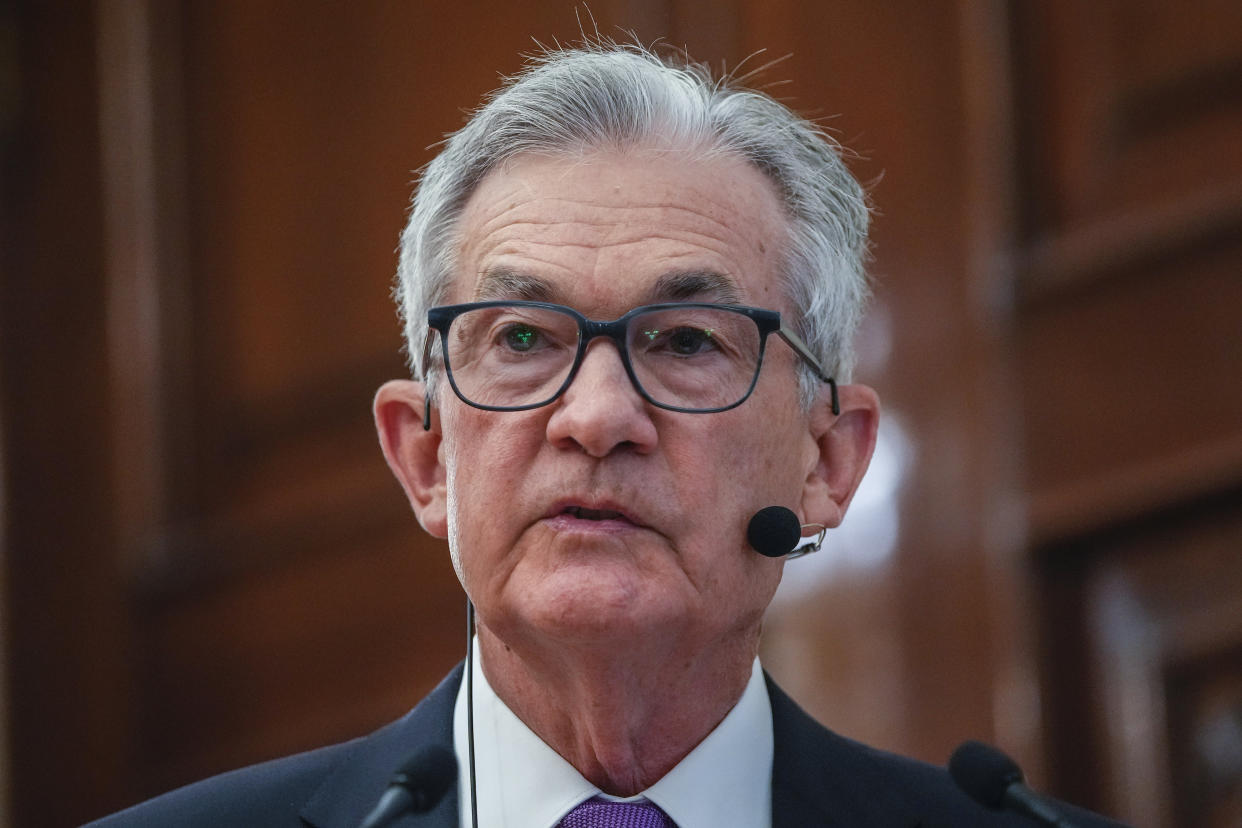Some Fed members wanted to hike rates in June but agreed to pause
Some Federal Reserve officials wanted to raise rates by 0.25% last month because they felt the job market was strong, the economy was showing signs of more resiliency, and inflation was not coming down fast enough.
They agreed to a pause anyway.
The details of that debate emerged Wednesday when the Fed released minutes from the June meeting of the Federal Open Market Committee (FOMC), the Fed committee that decides on policy.
Despite the reservations of some officials, the ultimate decision to hold rates steady last month was unanimous.
And almost all officials expect more rate increases this year, according to the minutes.
That aligns with recent comments from Fed Chair Jerome Powell, who said last week that there is still a risk of doing too little to bring down inflation.
He said he wouldn't take hiking interest rates at two consecutive policy meetings "off the table," noting that he doesn't see inflation excluding volatile food and energy prices getting back to Fed's 2% target this year or next.

The Fed had raised rates at 10 straight policy meetings through May, bringing its target range from 0%-0.25% to 5%-5.25%, the highest since 2007, in just 14 months.
New York Fed President John Williams said Wednesday that he supported the decision the Fed made to hold rates steady and noted that the incoming data support the hypothesis that there’s more work for the Fed to do when it comes to raising rates.
"I 110% support this decision we made and, and for the reason we made it,” Williams said at the Central Bank Research Association Conference at Columbia University. "…Now as we've gotten closer to what seems to be the peak rate…the idea of slowing down the pace of rate increases and continuing to slow the pace of rate increases makes sense."
The Fed opted to hold rates steady in June to offer more time for the prior rate hikes to take effect in the economy while also allowing Fed officials to see whether there was further credit tightening from the bank failures this spring.
Fed officials noted during the June meeting that the full effects of rate hikes had likely yet to be observed, though several highlighted the possibility that much of the effect of past monetary policy tightening may have already been realized. Officials noted that there is uncertainty about the lags.
Several mentioned that credit conditions had not appeared to have tightened significantly beyond what would be expected in response to higher rates since early last year. Some thought that it was still too early to assess with confidence the eventual effects of tighter bank credit conditions on the economy and wanted to monitor.
Almost all officials felt with inflation still well above the Fed’s 2% target and the job market strong, the risk that inflation could surprise to the upside or the possibility that persistently high inflation could cause inflation expectations to become unanchored remained key factors shaping the policy outlook.
Data they had absorbed from May showed declines in inflation had been slower than they had expected. Core goods inflation had moderated since the middle of last year, they noted, but it had slowed less rapidly than expected in recent months.
The Fed is "really concerned about inflation expectations," Annex Wealth Management chief economist Brian Jacobsen told Yahoo Finance Wednesday.
Some Fed officials noted a recent moderation in housing services inflation and said they expected this trend to continue.
However, a few pointed to upside risks associated with near-record low inventories of homes for sale, solid housing demand, and less-than-expected deceleration recently in measures of rents for leases signed by new tenants.
Some also remarked that core non-housing services inflation had shown few signs of slowing in the past few months.
"Almost all participants noted that in their economic projections that they judged that additional increases in the target federal funds rate during 2023 would be appropriate," the minutes read.
"Some" meeting participants indicated that they favored raising rates by 25 basis points in June or that they could have supported such a proposal.
"The participants favoring a 25 basis point increase noted that the labor market remained very tight, momentum in economic activity had been stronger than earlier anticipated, and there were few clear signs that inflation was on a path to return to the committee’s 2 percent objective over time."
In the end, though, "almost all participants judged it appropriate or acceptable" to pause. The final vote was unanimous.
Click here for the latest stock market news and in-depth analysis, including events that move stocks
Read the latest financial and business news from Yahoo Finance
